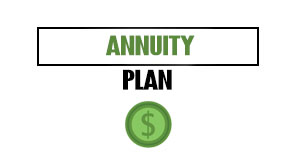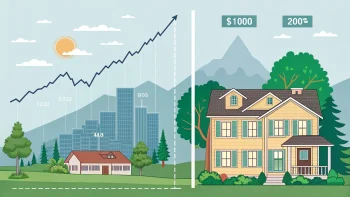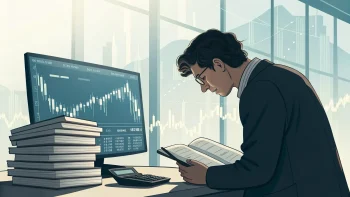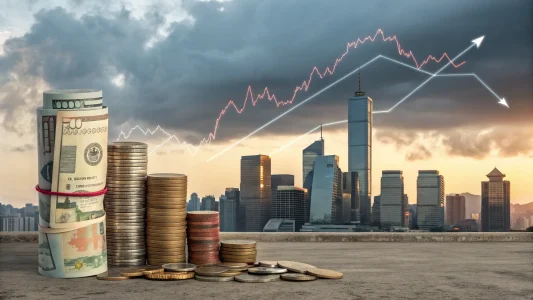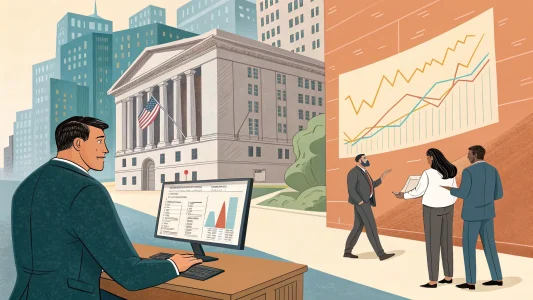Here’s a close look at recent economic events that have raised concerns about the stability of the US economy. I reflect on the latest job market developments, the impact of inflation, and market behavior. In my role as CEO and financial advisor, I share insights and observations that can help readers understand these critical issues.
Table of Contents
ToggleRecent Developments in the Job Market
The news paints a bleak picture for the US economy. Early reports indicate that the job market is weaker than expected. With only 73,000 new positions added in July and previous months’ job growth estimates reduced by 258,000, many observers are questioning the true pace of economic recovery.
These revised figures have raised concerns among policymakers and market experts alike. Tracking these changes is crucial, as the job market is a central indicator of our economic health. After noting these updates, I felt it was important to share my analysis through this detailed discussion.
View this post on Instagram
Market Behavior and Its Implications
The recent data comes at a time when stock valuations are notably high. With indices reaching levels that indicate very high earnings multiples, the market seems to be in a sensitive state. Some market movements observed early this morning have set off alarm bells, with dramatic declines that are affecting investor confidence.
There is talk among market watchers about extreme market reactions. This situation has even led to humorous comparisons involving prominent figures in the political and business arenas. Although the remarks may sound combative, they reflect genuine frustration with how current economic policies are influencing the market.
Political Tensions and Policy Debates
The unusual job data has sparked heated debates in the political sphere. Leaders from various camps have begun exchanging sharp criticisms regarding each other’s policies. One prominent political figure has pointed fingers at the head of the nation’s central banking system for not lowering interest rates to stimulate growth. In contrast, the central bank official has argued that external trade measures are adversely affecting economic expansion while contributing to higher inflation.
The tension in these political exchanges highlights the difficulties in finding a balanced approach to economic management. With inflation expected to worsen, the country may soon confront the challenge of stagflation—a situation in which stagnant growth coincides with rising consumer prices.
Understanding the Current Economic Climate
The situation calls for caution. When stock valuations soar, the market becomes more vulnerable to shifts in investor sentiment. Although there is some optimism that the upswing might not have reached overly dangerous territory, it is still a critical moment to remain attentive to changes.
To provide a clear picture, I have broken down the key factors contributing to the current economic uncertainty:
- Stalling Job Growth: New job creation has not met expectations, forcing a reassessment of earlier projections.
- Transparent Data Revisions: Previous estimates of job creation have been lowered, raising concerns about initial overly optimistic readings.
- Rising Market Volatility: Stock prices have shown dramatic fluctuations that signal underlying instability.
- Political Debates: Disagreements over monetary and trade policies have added to the uncertainty, with leaders trading strong words.
- Inflation Concerns: Persistent inflation, paired with slowed growth, may lead the economy towards a state of stagflation.
These points illustrate that the uncertainty affecting the job market is linked to wider economic challenges. Investors and policy experts alike are re-evaluating their positions in light of these new indicators.
Personal Perspective on Economic Shifts
As someone who has spent years advising clients on financial matters, I understand the delicate balance between optimism and caution. The recent job numbers were a reminder that a seemingly strong economy might hide underlying issues. I have seen similar patterns in the past when data points required us to adjust our perspectives quickly.
The remarks made earlier in the day were not merely for dramatic effect. They underscored the need to recognize that economic data is often subject to rapid changes. Over the years, I have learned that a cautious approach is valuable when dealing with conflicting signals from the market.
With the country facing both economic headwinds and elevated market valuations, there is a risk that decisions made too hastily could lead to adverse outcomes. I urge readers to stay informed and consider seeking professional advice before making financial moves.
Concerns Over Inflation and Future Outlook
The concerns about inflation are particularly unsettling. As production costs continue to rise and consumer prices follow suit, the overall economic outlook becomes dimmer. Many worry that without the proper policy response, the factors behind inflation could push the economy into stagnation. It is not merely a matter of lower growth but also how rising costs will affect family budgets, business investments, and overall consumer confidence.
In my discussions with colleagues and clients, we have debated various strategies to navigate these turbulent times. Some suggest that waiting for a natural market correction may be wisest, while others push for a proactive policy shift. In my view, a balanced approach is needed—one that carefully weighs the risks of both action and inaction.
Market Reactions and Investor Behavior
The behavior of stock markets in times like these is worth noting. When valuations soar to high multiples, volatility tends to increase. Many investors, including those I advise, become more cautious. The risk that sudden shifts in economic data may lead to rapid market declines results in heightened anxiety among market participants.
From a broader perspective, investors must consider not only the current market sentiment but also the long-term trends. While dramatic day-to-day movements are everyday in periods of uncertainty, our focus should remain on sustainable growth and prudent investment practices.
Adapting Strategies in Uncertain Times
Financial planning in a fluctuating economy requires a reassessment of strategies. I encourage investors to review their portfolios and maintain a perspective that aligns with long-term objectives. Financial advisors and investors alike must remain vigilant and adjust asset allocations based on new data.
One approach is to stay diversified. Avoiding concentration in any one asset class or market sector offers protection against unexpected downturns. Another recommendation is to maintain sufficient liquidity. This allows you to take advantage of opportunities when the market corrects itself.
Assessing the Broader Economic Impact
The current economic indicators are a reminder of the complex nature of economic management. The data on job growth and market valuations is not just a number—it represents the livelihoods of millions and reflects broader trends in consumer confidence, business investments, and government policy.
As I speak with peers and review historical economic patterns, I see similar concerns emerging during previous periods of economic strain. Though every cycle has its distinct features, the lessons remain consistent: act sensibly and stay informed. A realistic approach to the economic environment reduces the risk of excessive optimism that might lead to mistakes.
Key Takeaways for Today’s Economy
Here are the significant points that I believe are essential for understanding the current economic situation:
- Recent job data shows a significant slowdown in job creation, with new positions added being much lower than originally estimated.
- Questions around high stock market valuations increase concerns about potential market corrections.
- Political leaders are engaged in heated debates, each blaming the other for contributing factors like rising inflation and slower growth.
- The risk of stagflation poses a genuine challenge, given the combination of stagnant growth and rising prices.
- Investors should remain cautious and ensure that their investment strategies are aligned with long-term objectives.
Final Thoughts on Economic Resilience
The way forward requires clear thinking and pragmatic decision-making. Although the current indicators are concerning, history shows that markets and economies often recover with time and careful management. In these moments of uncertainty, balanced discussions and proactive planning are essential to safeguard our economic future.
My recommendation for those navigating these turbulent economic waters is to remain alert. Keep abreast of new economic data and adjust financial plans in response to changes. Rely on trusted financial advice and look for strategies that help mitigate risk without sacrificing long-term goals.






